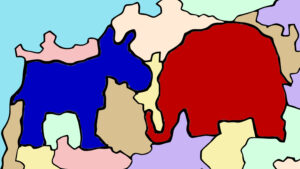
This is the first of a series of posts I’ll be making about how political positions we hold compare with the policies of the other countries of the world. Often, the propaganda of the political parties within this country can give us a distorted view of what’s normal, and the “echo chambers” that we create for ourselves through our social media circles and our choice of news sources can distort that view even more. Sometimes, it can help to step back and take in a wider view of things: what are other countries saying about these issues we’re debating within this one, and what do we think about the countries that tend to agree with our positions? (i.e. the company we keep.)
The first issue I’m tackling will be abortion, for obvious reasons. Here’s a list of the top 25 other nations of the world by population that either largely allow or largely prohibit abortion. (Based on UN data from 2017.)
Allow
China
India
Russia
Mexico
Viet Nam
Germany
Turkey
France
Italy
South Africa
Spain
Ukraine
Canada
Uzbekistan
Angola
Mozambique
Nepal
South Korea
Australia
Romania
Kazakhstan
Netherlands
Cambodia
Tunisia
Belgium
Prohibit
Indonesia
Pakistan
Brazil
Nigeria
Bangladesh
Ethiopia
Philippines
Egypt
Congo
Iran
Thailand
Tanzania
Myanmar
Kenya
North Korea
Colombia
Argentina
Uganda
Algeria
Sudan
Iraq
Afghanistan
Poland
Morocco
Saudi Arabia
Whichever side you’re personally on, what do you think of the company you’re keeping?

Here’s how I arrived at these lists:
- I started with a United Nations spreadsheet detailing abortion law in all the countries of the world as of 2017.
- I used two columns from that spreadsheet: whether abortion was legal by request and whether abortion was allowed due to socioeconomic factors.
- The countries in the Allowed column above had either two Yeses or one Yes with the other answer not available, while The countries in the Allowed column above had either two Nos or one No with the other answer not available. Countries with one Yes and one No or with no available answers didn’t make either column.
You can find the spreadsheet I used to make these calculations here. It also includes, as a secondary sheet, the original UN spreadsheet. If you find any errors in the formulas or in my methodology, please let me know. If you want to play around with the data yourself, you can easily make an editable copy of the spreadsheet through the Google Sheets “File | Make a copy” menu item.
